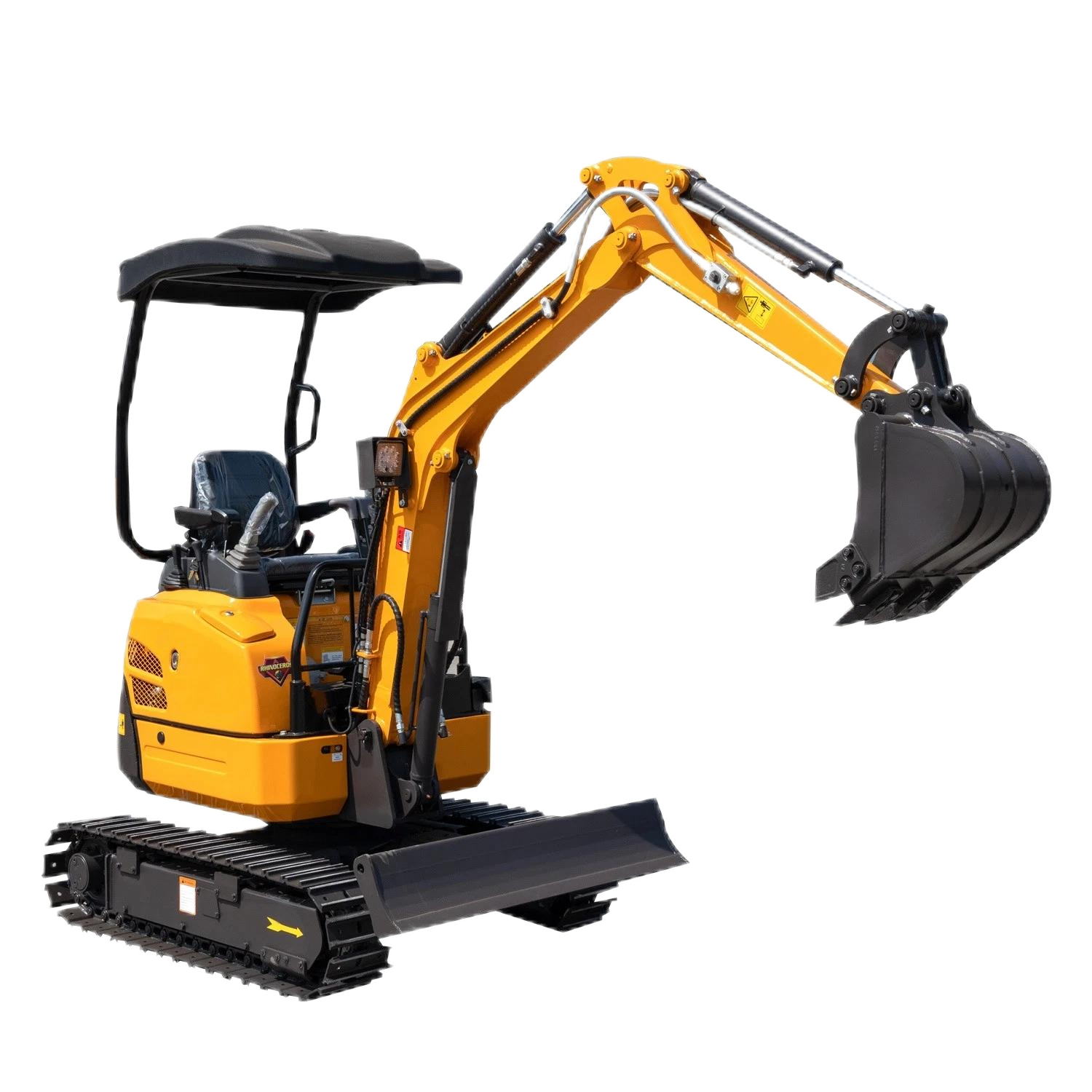A 1-ton crawler excavator is an ultra-small crawler-type construction machinery. Although it is small in size (with a body weight of about 1 ton, usually 2-3 meters in length, 1-1.3 meters in width, and 1.5-2 meters in height), it plays an important role in small-scale projects, field operations, and scenarios with low requirements for ground pressure, relying on the stability of crawler travel and adaptability to complex terrain. Its core advantages are "strong adaptability to terrain and good operational stability". The following are the specific applicable fields and functional characteristics:

| Comparison Dimension | 1-ton Crawler Excavator | 1-ton Wheeled Excavator |
|---|
| Terrain Adaptability | Good at complex terrains such as muddy land, slopes, gravel land, and soft soil | Only suitable for hardened roads and flat, solid ground |
| Operational Stability | Large crawler support area, more stable machine body during excavation/crushing | Small wheel support area, easy to shake during heavy-load operations |
| Impact on Ground | Crawlers may slightly scratch the ground, not suitable for scenes requiring protection such as indoor floor tiles | Wheeled type causes little damage to hardened ground, suitable for indoor/pedestrian walkways |
| Transfer Method | Slow walking speed (≤3km/h), requiring trailer transportation for long distances | Can transfer short distances by itself (speed 5-10km/h) |
- Scene Limitations: Due to the fact that crawlers are easy to get stuck with mud and the body width is slightly larger than that of wheeled ones, they cannot enter indoor spaces (such as corridors and shops) or narrow doorways (width < 1 meter), nor are they suitable for operations on hardened roads (such as asphalt roads and indoor floor tiles), otherwise the ground will be scratched.
- Load Limitations: As an ultra-small equipment, it has limited digging force (bucket capacity is usually ≤0.1 cubic meters), and is not suitable for long-term crushing of thick concrete (thickness > 15 cm) or transporting heavy materials (such as large stones).
- Maintenance Points: The crawler needs to be cleaned of mud regularly to avoid wear of the crawler plates; after working in the rain, the tightness of the crawler should be checked to prevent falling off.
The 1-ton crawler excavator is an ideal choice for "field, non-hardened sites, and small complex terrain operations", especially suitable for agriculture, rural infrastructure, outdoor gardens, and other scenarios. If the operation is mainly on hardened roads or indoors, wheeled excavators are preferred; if it is mainly in the field, muddy/sloped land, crawler excavators are more suitable.






